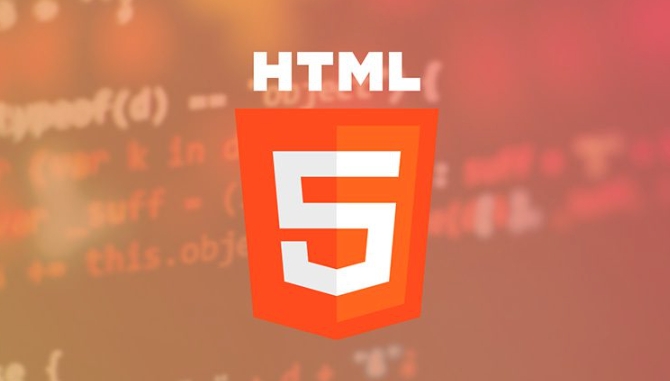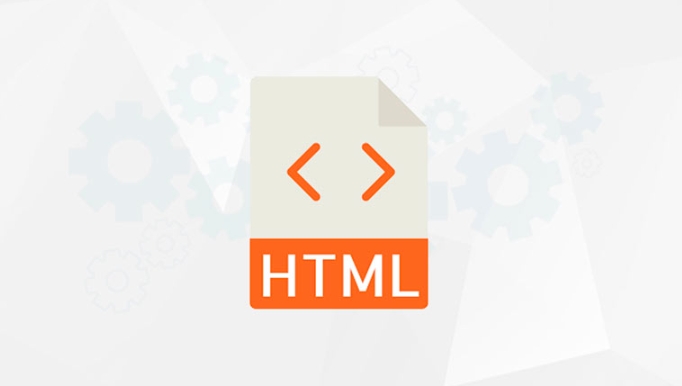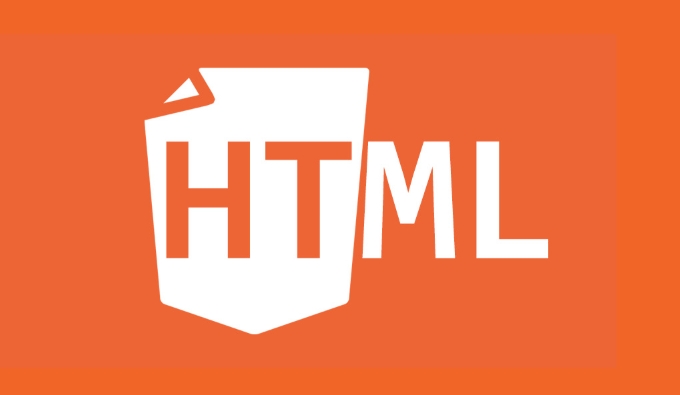Exploring the Shadow DOM Concept in Relation to HTML Structure
Jul 08, 2025 am 12:04 AM <p> When you're working with modern web components, especially in frameworks or libraries that use encapsulation like Angular, Vue, or custom elements, you might come across the term Shadow DOM . It's a key part of how browsers let developers create isolated HTML structures that don't interfere with the main document. If you've ever wondered why some elements on a page seems untouchable by your CSS or JavaScript, there's a good chance they were inside a Shadow DOM.
<p> When you're working with modern web components, especially in frameworks or libraries that use encapsulation like Angular, Vue, or custom elements, you might come across the term Shadow DOM . It's a key part of how browsers let developers create isolated HTML structures that don't interfere with the main document. If you've ever wondered why some elements on a page seems untouchable by your CSS or JavaScript, there's a good chance they were inside a Shadow DOM.
 <p> Let's break down what it means and how it affects HTML structure and styling.
<p> Let's break down what it means and how it affects HTML structure and styling.

What Is the Shadow DOM?
<p> The Shadow DOM is a browser feature that allows you to attach a hidden, separate DOM tree to an element — one that's not affected by the rest of the page. This is super useful for building reusable components without worrying about style clashes or DOM pollution. <p> Think of it like this: You have a regular HTML element (like a<div> ), and then you attach a completely isolated subtree to it. That subtree lives in the “shadow,” and it's rendered separately from the main document. <img src="/static/imghw/default1.png" data-src="https://img.php.cn/upload/article/000/000/000/175190424480883.jpeg" class="lazy" alt="Exploring the Shadow DOM Concept in Relation to HTML Structure"><p> Here's a simple example:</p><pre class='brush:php;toolbar:false;'> const host = document.querySelector(&#39;#my-element&#39;);
const shadowRoot = host.attachShadow({ mode: &#39;open&#39; });
shadowRoot.innerHTML = `
<style>
p { color: red; }
</style>
<p>This text is inside the Shadow DOM.</p>
`;</pre><p> Now, even if there are global styles affecting <code><p> tags, this paragraph will stay red because it's scoped inside the shadow root.How Does It Affect HTML Structure?
<p> From the outside, the host element looks normal. But internally, it has its own structure that's not directly accessible unless you specifically reach into the shadow root.- The main document can't directly select or modify elements inside the Shadow DOM.
- Elements inside the shadow root are scoped , meaning they're isolated from external scripts and styles.
- You can still pass data in via attributes or properties, but the internal structure stays protected.
<video> tag. Its default controls (play, volume, etc.) are actually rendered using Shadow DOM — which is why you can't just inspect them like normal HTML elements.Styling Inside and Outside the Shadow DOM
<p> Styling inside the Shadow DOM works much like regular CSS, but there are a few important things to keep in mind:- Styles defined inside the shadow root only applies within that shadow root .
- External styles won't affect internal elements unless explicitly allowed using
:host,::slotted(), or CSS variables.
<style>
::slotted(p) {
color: blue;
}
</style>
<slot></slot><p> This would allow any <p> element passed into the component via the <slot> to be styled blue, even though it originated from outside the shadow root.<p> Also, if you want to expose certain customization points, you can use CSS variables: :host {
--text-color: green;
}
p {
color: var(--text-color);
}<p> Then, users of your component can override that variable in their own CSS.
When Should You Use the Shadow DOM?
<p> You'll typically see the Shadow DOM used in:- Web Components (custom elements shadow DOM templates)
- Frameworks like Angular, Polymer, or StencilJS
- UI libraries that need strong encapsulation (eg, Material Web Components)
<p> So yeah, Shadow DOM is basically a way to build walls around parts of your HTML. It gives you clean encapsulation for styles and markup, and it plays well with web standards. Not too complicated once you get the hang of it — just take a bit of getting used to how isolation works. <p> Basically that's it.
The above is the detailed content of Exploring the Shadow DOM Concept in Relation to HTML Structure. For more information, please follow other related articles on the PHP Chinese website!

Hot AI Tools

Undress AI Tool
Undress images for free

Undresser.AI Undress
AI-powered app for creating realistic nude photos

AI Clothes Remover
Online AI tool for removing clothes from photos.

Clothoff.io
AI clothes remover

Video Face Swap
Swap faces in any video effortlessly with our completely free AI face swap tool!

Hot Article

Hot Tools

Notepad++7.3.1
Easy-to-use and free code editor

SublimeText3 Chinese version
Chinese version, very easy to use

Zend Studio 13.0.1
Powerful PHP integrated development environment

Dreamweaver CS6
Visual web development tools

SublimeText3 Mac version
God-level code editing software (SublimeText3)
 Implementing Clickable Buttons Using the HTML button Element
Jul 07, 2025 am 02:31 AM
Implementing Clickable Buttons Using the HTML button Element
Jul 07, 2025 am 02:31 AM
To use HTML button elements to achieve clickable buttons, you must first master its basic usage and common precautions. 1. Create buttons with tags and define behaviors through type attributes (such as button, submit, reset), which is submitted by default; 2. Add interactive functions through JavaScript, which can be written inline or bind event listeners through ID to improve maintenance; 3. Use CSS to customize styles, including background color, border, rounded corners and hover/active status effects to enhance user experience; 4. Pay attention to common problems: make sure that the disabled attribute is not enabled, JS events are correctly bound, layout occlusion, and use the help of developer tools to troubleshoot exceptions. Master this
 Configuring Document Metadata Within the HTML head Element
Jul 09, 2025 am 02:30 AM
Configuring Document Metadata Within the HTML head Element
Jul 09, 2025 am 02:30 AM
Metadata in HTMLhead is crucial for SEO, social sharing, and browser behavior. 1. Set the page title and description, use and keep it concise and unique; 2. Add OpenGraph and Twitter card information to optimize social sharing effects, pay attention to the image size and use debugging tools to test; 3. Define the character set and viewport settings to ensure multi-language support is adapted to the mobile terminal; 4. Optional tags such as author copyright, robots control and canonical prevent duplicate content should also be configured reasonably.
 Best HTML tutorial for beginners in 2025
Jul 08, 2025 am 12:25 AM
Best HTML tutorial for beginners in 2025
Jul 08, 2025 am 12:25 AM
TolearnHTMLin2025,chooseatutorialthatbalanceshands-onpracticewithmodernstandardsandintegratesCSSandJavaScriptbasics.1.Prioritizehands-onlearningwithstep-by-stepprojectslikebuildingapersonalprofileorbloglayout.2.EnsureitcoversmodernHTMLelementssuchas,
 HTML for email templates tutorial
Jul 10, 2025 pm 02:01 PM
HTML for email templates tutorial
Jul 10, 2025 pm 02:01 PM
How to make HTML mail templates with good compatibility? First, you need to build a structure with tables to avoid using div flex or grid layout; secondly, all styles must be inlined and cannot rely on external CSS; then the picture should be added with alt description and use a public URL, and the buttons should be simulated with a table or td with background color; finally, you must test and adjust the details on multiple clients.
 How to associate captions with images or media using the html figure and figcaption elements?
Jul 07, 2025 am 02:30 AM
How to associate captions with images or media using the html figure and figcaption elements?
Jul 07, 2025 am 02:30 AM
Using HTML sums allows for intuitive and semantic clarity to add caption text to images or media. 1. Used to wrap independent media content, such as pictures, videos or code blocks; 2. It is placed as its explanatory text, and can be located above or below the media; 3. They not only improve the clarity of the page structure, but also enhance accessibility and SEO effect; 4. When using it, you should pay attention to avoid abuse, and apply to content that needs to be emphasized and accompanied by description, rather than ordinary decorative pictures; 5. The alt attribute that cannot be ignored, which is different from figcaption; 6. The figcaption is flexible and can be placed at the top or bottom of the figure as needed. Using these two tags correctly helps to build semantic and easy to understand web content.
 What are the most commonly used global attributes in html?
Jul 10, 2025 am 10:58 AM
What are the most commonly used global attributes in html?
Jul 10, 2025 am 10:58 AM
class, id, style, data-, and title are the most commonly used global attributes in HTML. class is used to specify one or more class names to facilitate style setting and JavaScript operations; id provides unique identifiers for elements, suitable for anchor jumps and JavaScript control; style allows for inline styles to be added, suitable for temporary debugging but not recommended for large-scale use; data-properties are used to store custom data, which is convenient for front-end and back-end interaction; title is used to add mouseover prompts, but its style and behavior are limited by the browser. Reasonable selection of these attributes can improve development efficiency and user experience.
 How to handle forms submission in HTML without a server?
Jul 09, 2025 am 01:14 AM
How to handle forms submission in HTML without a server?
Jul 09, 2025 am 01:14 AM
When there is no backend server, HTML form submission can still be processed through front-end technology or third-party services. Specific methods include: 1. Use JavaScript to intercept form submissions to achieve input verification and user feedback, but the data will not be persisted; 2. Use third-party serverless form services such as Formspree to collect data and provide email notification and redirection functions; 3. Use localStorage to store temporary client data, which is suitable for saving user preferences or managing single-page application status, but is not suitable for long-term storage of sensitive information.
 Implementing Native Lazy Loading for Images in HTML
Jul 12, 2025 am 12:48 AM
Implementing Native Lazy Loading for Images in HTML
Jul 12, 2025 am 12:48 AM
Native lazy loading is a built-in browser function that enables lazy loading of pictures by adding loading="lazy" attribute to the tag. 1. It does not require JavaScript or third-party libraries, and is used directly in HTML; 2. It is suitable for pictures that are not displayed on the first screen below the page, picture gallery scrolling add-ons and large picture resources; 3. It is not suitable for pictures with first screen or display:none; 4. When using it, a suitable placeholder should be set to avoid layout jitter; 5. It should optimize responsive image loading in combination with srcset and sizes attributes; 6. Compatibility issues need to be considered. Some old browsers do not support it. They can be used through feature detection and combined with JavaScript solutions.






